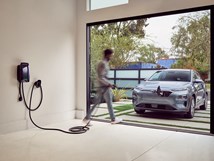Lyft Buys British Developer of AR Tech
U.S. ride-hailing service Lyft Inc. has acquired British startup Blue Vision Labs to bolster its efforts to develop services involving self-driving vehicles.
U.S. ride-hailing service Lyft Inc. has acquired British startup Blue Vision Labs to bolster its efforts to develop services involving self-driving vehicles.
The acquisition is the first for Lyft’s 15-month-old autonomous-driving unit. Terms weren’t disclosed, but media reports put the value of the deal at $72 million, with provisions for an additional $30 million if unspecified milestones are met.
Lyft plans to use the London-based computer vision technology to help build maps of a car’s surrounding environment.
London-based Blue Vision was founded in 2016 by a group from Imperial College London and the University of Oxford. Since March the company has raised $17 million from such investors as Accel, Google Ventures and Horizons Ventures.
Blue Vision’s 40-member staff is developing a cloud-based, augmented reality platform for used by smartphone apps. The technology uses 3D maps to superimpose icons and symbols on live images captured by the phone’s camera.
The collaborative technology allows multiple people to look at the same spot in space and both see and create interactive, virtual images. This could be used to help ride-hailing drivers find customers who requested a ride.
Similarly, the platform can be used to aid navigation by floating arrows above a street or sidewalk as viewed by a phone. Or, it can superimpose icons to identify retailers by the type of goods they sell and share that information with other users.
RELATED CONTENT
-
Cobots: 14 Things You Need to Know
What jobs do cobots do well? How is a cobot programmed? What’s the ROI? We asked these questions and more to four of the leading suppliers of cobots.
-
Jeeps Modified for Moab
On Easter morning in Moab, Utah, when the population of that exceedingly-hard-to-get-to town in one of the most beautiful settings on Earth has more than doubled, some people won’t be hunting for Easter eggs, but will be trying to get a good look at one of the vehicles six that Jeep has prepared for real-life, fast-feedback from the assembled at the annual Easter Jeep Safari.
-
Multiple Choices for Light, High-Performance Chassis
How carbon fiber is utilized is as different as the vehicles on which it is used. From full carbon tubs to partial panels to welded steel tube sandwich structures, the only limitation is imagination.








